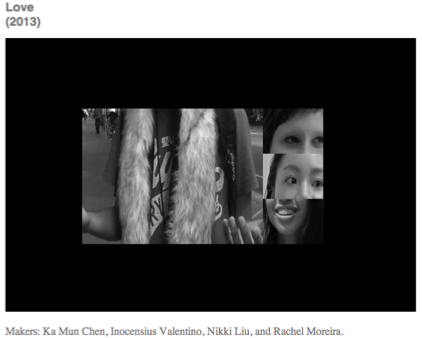Plotting The Database
So with this weeks reading I focused on the notion of Plot and the way in which it is used within a database interface. Below I have listed some of the statements/quotes that I found most interesting..
‘Plot arranges events to take shape in the mind as a single entity; a contemplative whole made of structurally related parts: cause and effect chains, points of tension and release, beginnings, middles and ends.’
The entire section on ‘entry points’ within an interface plot I found to be really super interesting and helpful, as it relates completely back to my groups Korsakow Film. This is reflective of the way in which a viewer is able to enter at any point (however constrained that point is by the creator) and bounce around form place to place within the interface, but also having it all related to tell a non-linear narrative. – ‘A user chooses when and where to exit a database narrative; where a user enters, as with most narratives, is usually through a designed portal. Certain types of networked, distributed or transmedia narratives do have multiple entry points, where an encounter with a narrative segment leads to a maze of other segments. But the opening interface to a database is a staged entry and may offer a broad, restricted or randomly generated set of files and paths. Entry points can establish narrative frames, metaphors for navigation , genre motifs, present views of data sets, describe elements of plot, character, setting or theme – or withhold any and all of these. However the interface is designed, the entry point prepares the user for interaction and most importantly the desire for interaction.’
.‘An interface is more than a map. It is a map that changes with the user’s navigation in time, offering multiple interpretive paths and levels of abstraction. But a plotted interface – to a database narrative or fiction, for example – withholds as much as it reveals. A plotted interface provides micro and macro views, but also limits and delays access to those views. ‘
…….
I apologise for the lack of clear intent with these reading blog posts. I write them along while I do the reading and just take notes on the things I think sound good or interest me. Sometimes it’s hard to find such things when I don’t fully get the main idea of the reading, but I just wing it and write about what comes to mind haha. So yeah, sorry, but enjoy!



